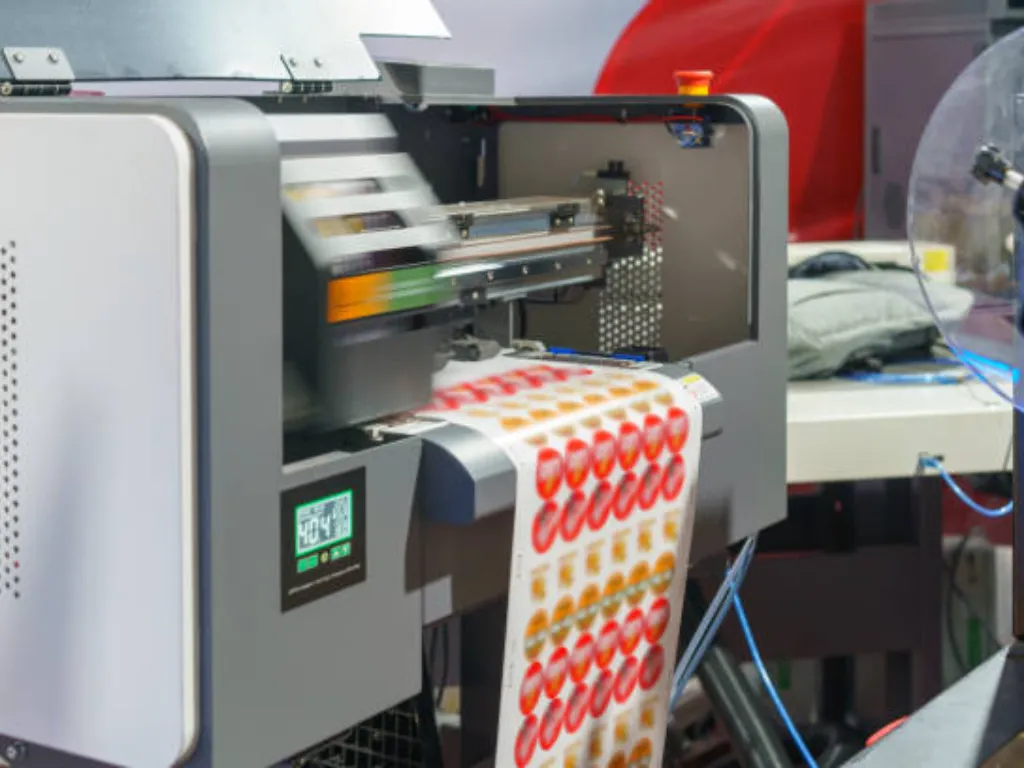In recent years, UV inks in flexo printing have gained significant traction in the printing industry. This shift is due to their numerous advantages over traditional inks, driving innovations and elevating product quality. The integration of UV inks into flexographic printing processes not only addresses environmental concerns but also improves efficiency and product aesthetics.
The interest in UV inks is rising among marketing professionals seeking vibrant, durable outcomes that can positively impact branding efforts. By ensuring high-quality print results, these inks play a pivotal role in enhancing consumer perception and driving brand loyalty.

The Fundamentals of Flexographic Printing
Flexo printing is a versatile method primarily used for packaging and labels. It utilizes flexible printing plates wrapped around cylindrical rollers. This modern approach accommodates various substrates, from plastic films to corrugated fiberboard.
Why Choose Flexographic Printing?
Marketing professionals often opt for flexographic printing because of its efficiency in producing high-volume orders. It is notably faster and more adaptable than other printing methods, offering broad material compatibility and quicker drying times. Understanding these facets can help businesses plan better campaigns and optimize their investments in printed materials.
What Are UV Inks?
UV inks are a form of liquid ink that undergoes a unique curing process through ultraviolet light exposure. Unlike traditional inks that may require long drying periods, UV inks harden almost instantaneously, reducing production times significantly.
Benefits of Using UV Inks
The use of UV inks in flexo printing offers multiple advantages:
- Eco-friendly: UV inks are free from volatile organic compounds (VOCs), making them environmentally safe compared to solvent-based options.
- Durability: They produce prints resistant to scratches and fading, essential for labels and packaging that endure transportation and handling.
- High Quality: These inks provide sharp, vibrant colors, enhancing the visual appeal of materials such as brochures and product labels.
How UV Inks Enhance Flexo Printing
The choice of UV inks in flexo printing represents an upgrade to traditional methods, bringing enhanced quality and efficiency.
Improved Application Techniques
Flexographic presses utilizing UV inks experience greater precision in ink application, which is crucial for achieving consistent quality across large print runs.
Reduced Waste
The rapid curing of UV inks minimizes the chances of errors, translating into lower material wastage and cost savings.
Cost Considerations
Although UV inks can be more expensive upfront, their benefits often lead to cost efficiencies over time. The reduced need for reprints and the high durability of printed goods contribute to long-term savings.
Environmental Impact
In striving for sustainability, the environmental advantages of UV inks are significant. They emit fewer pollutants, aligning with the eco-friendly goals many companies aim to achieve.
Sustainability Initiatives in Printing
Many organizations are adopting UV inks to align with global sustainability standards, significantly reducing their carbon footprint.
Applications in Various Industries
The versatility of UV inks in flexo printing means they find application across several industries, including food packaging, cosmetics, and pharmaceuticals.
Packaging and Labels
These sectors benefit greatly due to the vivid and durable qualities of UV curable inks, important for maintaining brand integrity across diverse environments.
Marketing Materials
Glossy brochure printing also sees significant improvements when leveraging UV inks, offering potential for engaging and effective branding efforts.
Challenges
While there are numerous benefits, adopting UV inks also presents challenges such as needing specialized equipment and handling protocols to ensure safety and optimal performance.
Maintaining Brand Standards
Ensuring consistency and quality with UV inks in branding materials is a benefit marketers cannot overlook. Successful deployments showcase high-impact visuals that remain true to brand colors and designs.
Industry Innovations and Future Trends
As technology evolves, the printing industry will likely see further innovations in UV ink formulations, improving energy efficiency in curing processes and incorporating advanced color-management technologies.
Automation and Efficiency
Integration of automation in flexo printing with UV inks can lead to substantial boosts in productivity and output quality.
Conclusion
The adoption of UV inks in flexo printing reflects a paradigm shift towards more sustainable and efficient practices. As new advancements emerge within this realm, they promise to unlock further potential, enhancing overall printing processes and outputs. Marketing professionals must stay informed and leverage these trends to maintain competitive advantages within their industries.

FAQ
What are the primary benefits of using UV inks?
UV inks offer numerous benefits including quick drying times, high durability, and vibrant colors, all while being environmentally friendly.
How do UV inks affect production efficiency?
The rapid curing process of UV inks significantly reduces downtime between prints, enhancing overall production efficiency and reducing waste.
Are there any drawbacks to using UV inks?
Some challenges include the need for specialized equipment and training to handle and dispose of the ink safely.
The flexo printing process explained provides additional insights into flexo printing methodologies.






